Old Weapons And Objects At The Museum
Last week I visited an exhibition about old weapons and objects found on Transylvanian territory during archeological excavations, over the years. It was a very interesting one as you could learn how out ancestors lived and what they used to defend themselves and their land as well. Those times were not quite peaceful, there was always a war or a battle to fight.
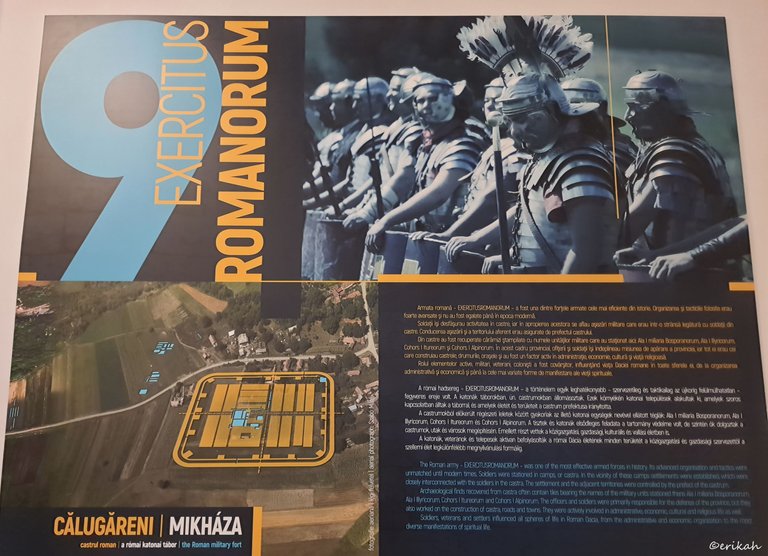
Exercitusromanorum was the name of the Roman army and you most likely have seen similar soldiers in movies.
You know what was funny? When I visited the exhibition organized by special forces, I was amazed to learn that a bullet proof vest weighs 12kg, a helmet equipped with all the necessary gadgets weighs 4kg, not to mention the weapons they need to carry.
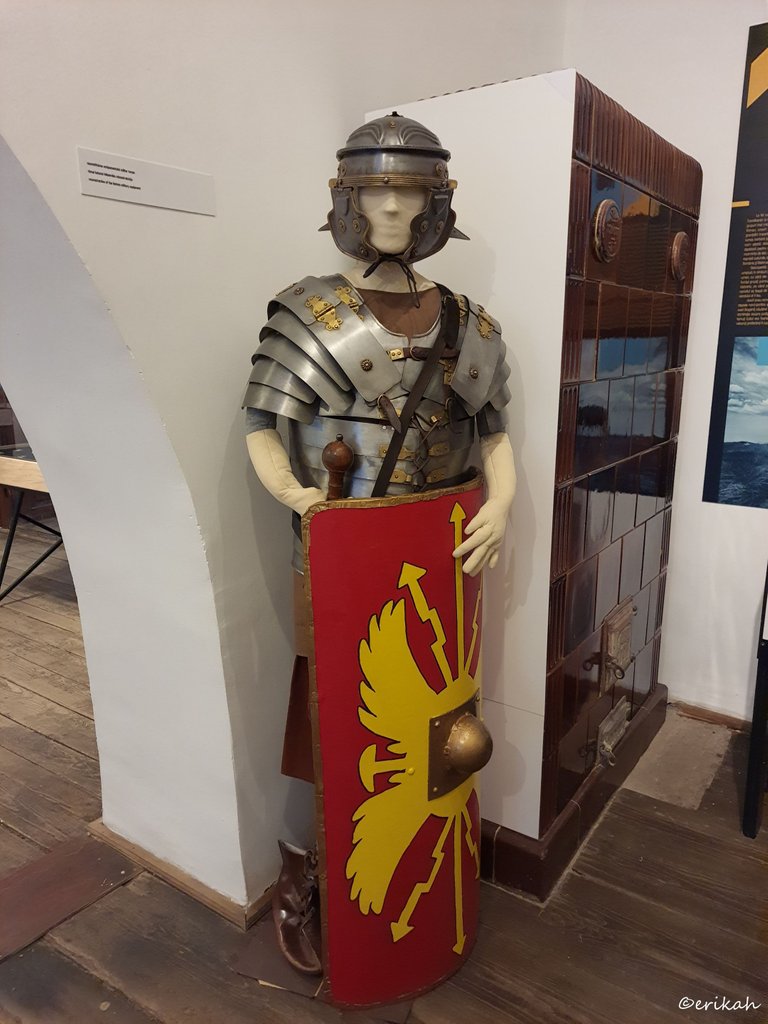
Now look at this guy. Obviously it's a dummy and the armor suit is made based on findings and descriptions, but the original they were wearing those days was similar. Do you think his gear was lighter? I don't think so. Plus not to mention the comfort. These days military gears are tested and made to be somewhat comfortable as soldiers need to resist for an undefined period and do their duties as well.
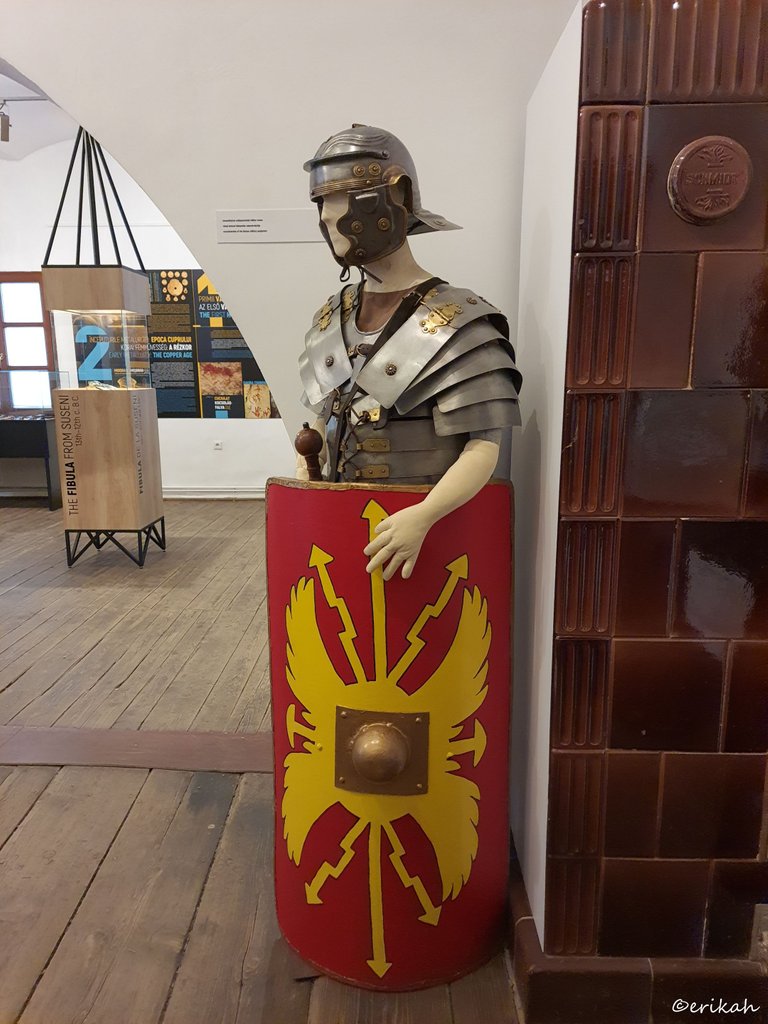
There was a group of school kinds in the museum and they found this guy very amusing, so they spent 10 minutes taking selfies and goofy photos here, so I needed to wait for them to leave. I wasn't happy at all.

Stamped tiles, clay projectiles, arrowheads and crossbow bolts, spearheads, axe from the Roman soldier's equipment.
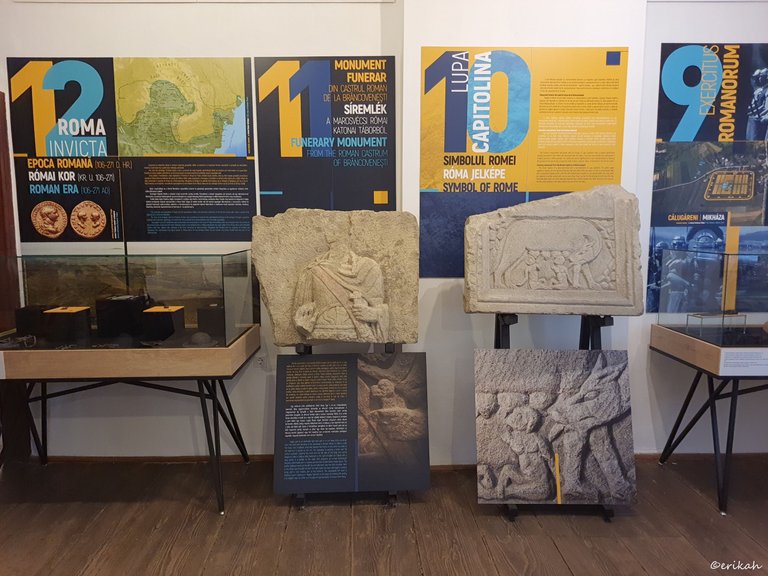
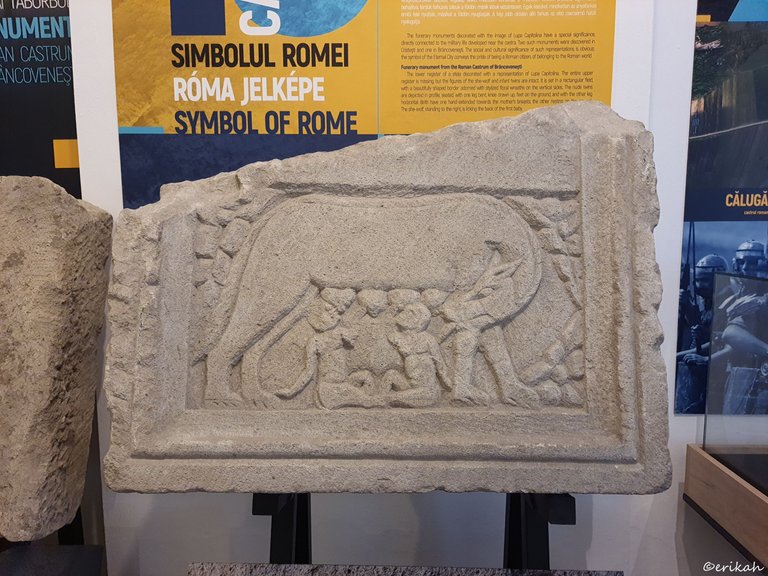
Symbol of Rome - Funerary monument from the Roman Castrum of Brâncovenești.
In the Roman Republic and the Roman Empire, the Latin word castrum, plural castra, was a military-related term.
Romans used the term castrum for different sizes of camps – including large legionary fortresses, smaller forts for cohorts or for auxiliary forces, temporary encampments, and "marching" forts. The diminutive form castellum was used for fortlets, typically occupied by a detachment of a cohort or a centuria. source
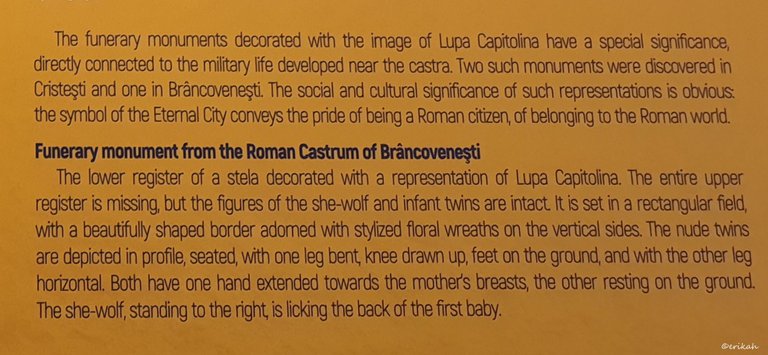
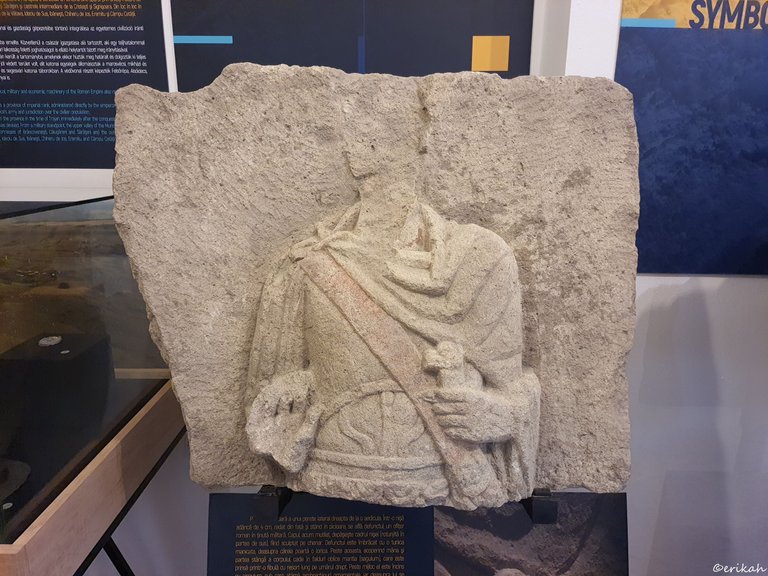

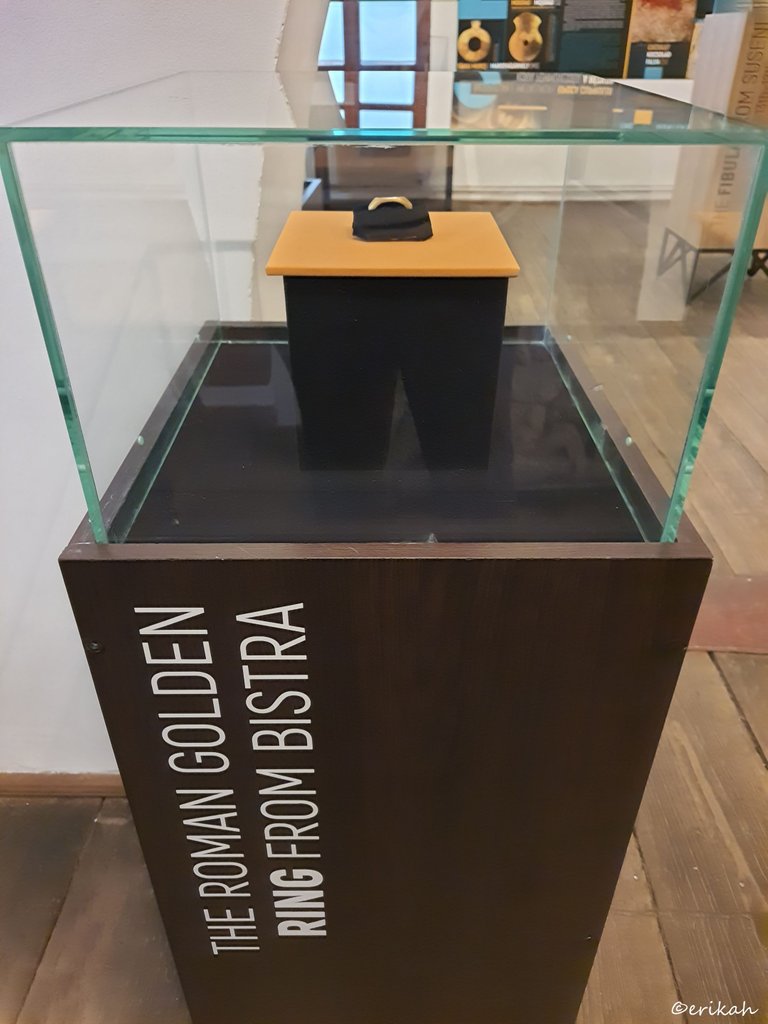

The Roman golden ring from Bistra. Even though I would not wear such a ring, it's a nice one and I bet you can find similar ones today.
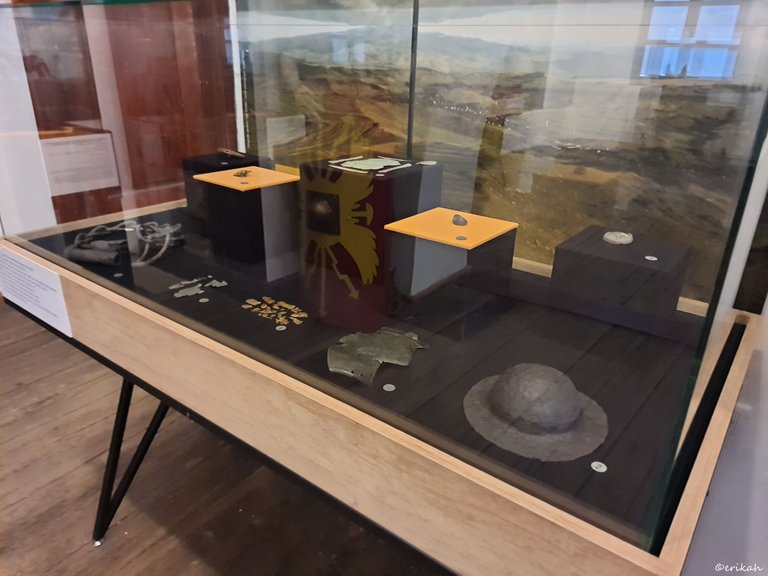
There were some interesting pieces here. I was looking at the one in the corner, that looked like a hat, but could not be a hat as it was quite small. I thought it must mean something if they displayed it here. Then I read the label and it says it's a shieldboss. Now if you go back to the armored guy and have a look again, his shield has this shieldboss. I'm not sure what was the purpose of it, but it sure added some extra weight to carry.
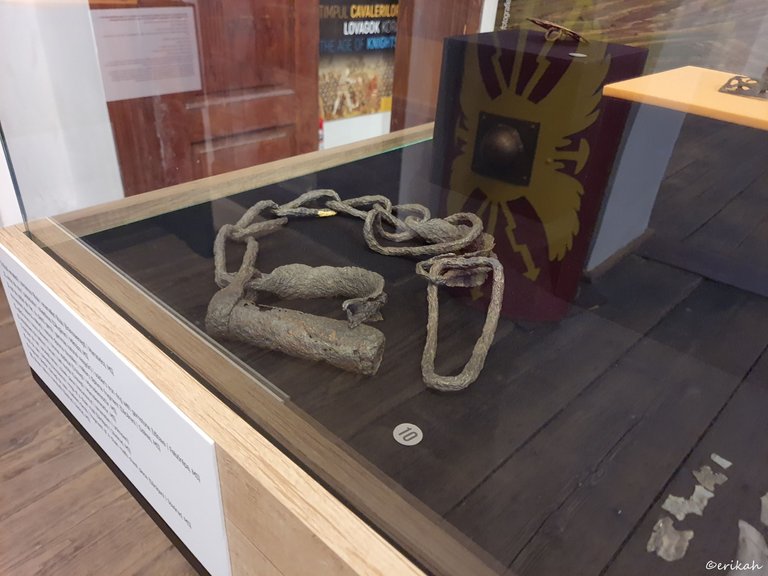
Can you guess what these are? Handcuffs.
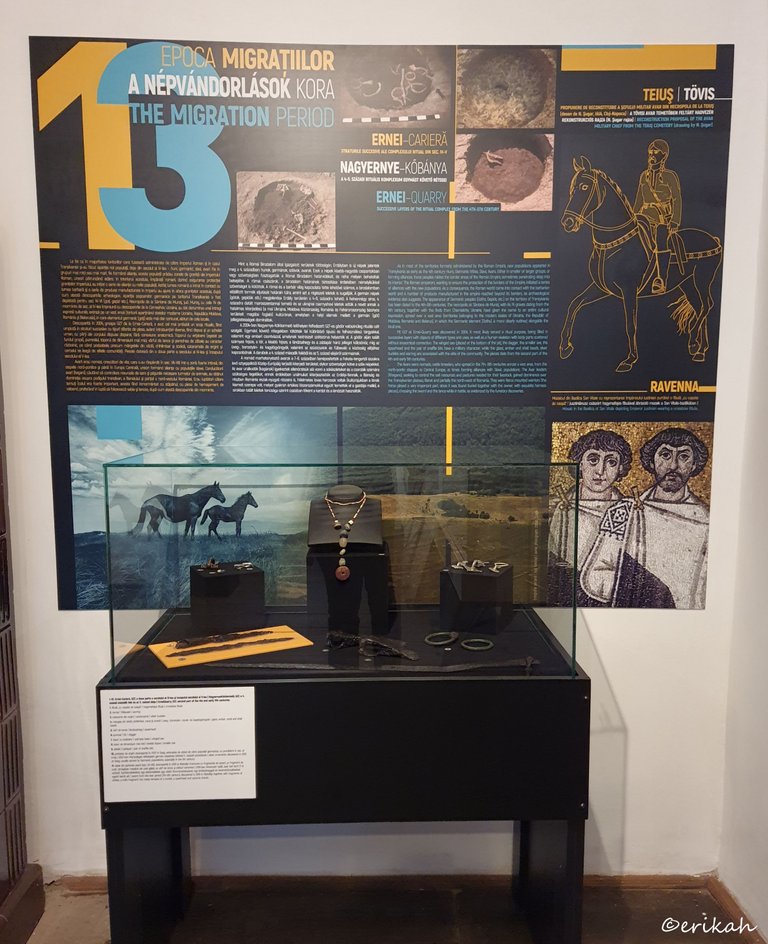
The migration period.
The Migration Period, also known as the Barbarian Invasions, was a period in European history marked by large-scale migrations that saw the fall of the Western Roman Empire and subsequent settlement of its former territories by various tribes, and the establishment of the post-Roman kingdoms. The term refers to the important role played by the migration, invasion, and settlement of various tribes, notably the Franks, Goths, Alemanni, Alans, Huns, early Slavs, Pannonian Avars, Magyars, and Bulgars within or into the former Western Empire and Eastern Europe. The period is traditionally taken to have begun in AD 375 (possibly as early as 300) and ended in 568. Various factors contributed to this phenomenon of migration and invasion, and their role and significance are still widely discussed. source
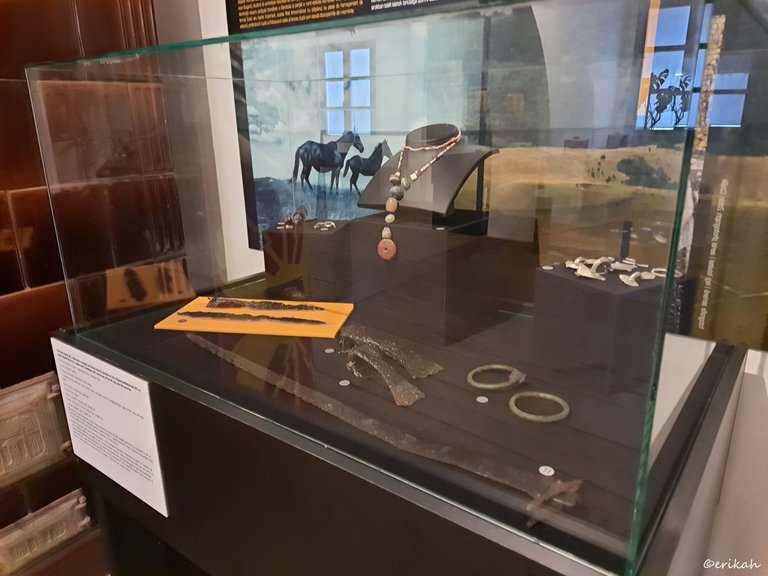
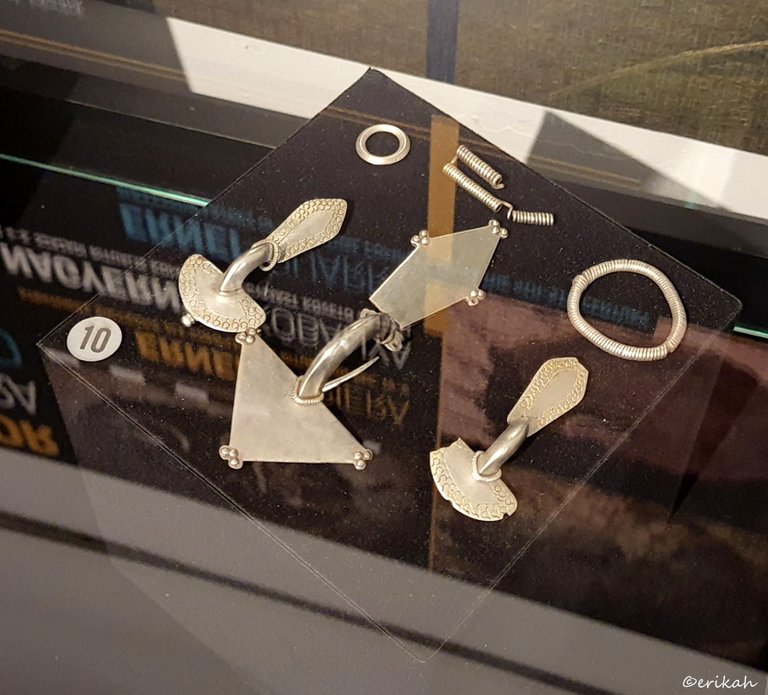
I'm always amazed to see so precised work, when it comes to ancient jewellery. Look at these pieces.
Funny that to me it seems like we're living in a migration period again. They say history has the habit of repeating itself and it seems to be true. We see migrants flooding Europe, thinking they can have a better life here. They fail to realize that none of the countries have the resources to support an endless number of people, so they end up being deported.
Stay tuned as there's more to come.

If you're a newbie, you may want to check out these guides:
- Communities Explained - Newbie Guide
- Cross Posting And Reposting Explained, Using PeakD
- Hive Is Not For Me
- How To Pump Your Reputation Fast - Newbie Guide
- Tips And Tricks & Useful Hive Tools For Newbies
- More Useful Tools On Hive - Newbie Guide
- Community List And Why It Is Important To Post In The Right Community
- Witnesses And Proposals Explained - Newbie Guide
- To Stake, Or Not To Stake - Newbie Guide
- Tags And Tagging - Newbie Guide
- Newbie Expectations And Reality

Thanks for sharing your experience at the museum with us. The shield and helmet are a lot of weight to carry for a battle. People really had things tough back then.
Perfectly said. I wish more people will realize this and start to develop and build what they admire about certain countries in their own countries. The way Nigerians struggle to leave to other western countries is really shocking and alarming.
With covid and the economical difficulties every country is dealing with, it's hard to make ends meet for their own citizens, so how could any government allocate funds to migrants.
You have a good poit, your idea could help many.
Simplemente hermoso 🤩 he impresionante tu contenido me proyecta a tiempos antiguos.
I'm glad you like it.
Looks like a really interesting museum. Whilst I love the history, because of the stories that feed me, what I don't love about these kinds of museums is the mannequins - they totally creep me out haha.
Lol, they are harmless, trust me 😂
You never know! They might come to life when your back is turned. Can't trust them!
Lol, you can't be serious 😃
You never know!
The jewelry does look amazing considering how old they are.
That Roman ring looks very similar with what one would now call ghiul
That's exactly what I thought when I saw them.
I had to look up what ghiul means as I has some vague idea. But yes, you're right.
That's a nice and impressive exhibition! However, from what I know there is under construction the first Roman and Dacian museum in the ASTRA Park from Sibiu, so I'm really curious to see what it will come up with when it will be ready. Until then, we can only pick parts of similar experiences from different cities since there is not a complete one already existing :(
I've been to Astra Museum several times and was planning to go back soon, but that means I need to wait. Thanks for letting me know though. Let's hope the new one will also be amazing :)
Your post made me remember the time my family and I went to Bataan, Philippines. I forgot the name of the place but there was a small museum there where they displayed the things that the Japanese soldiers, and Filipino and American prisoners wore during the Bataan Death March.
You know, museums doesn't just display stuff but they give us a reflection of what happened in the past that is part of our history as a nation.
Every museum is a good place to learn about history. I'm glad my post reminded you of that museum :)